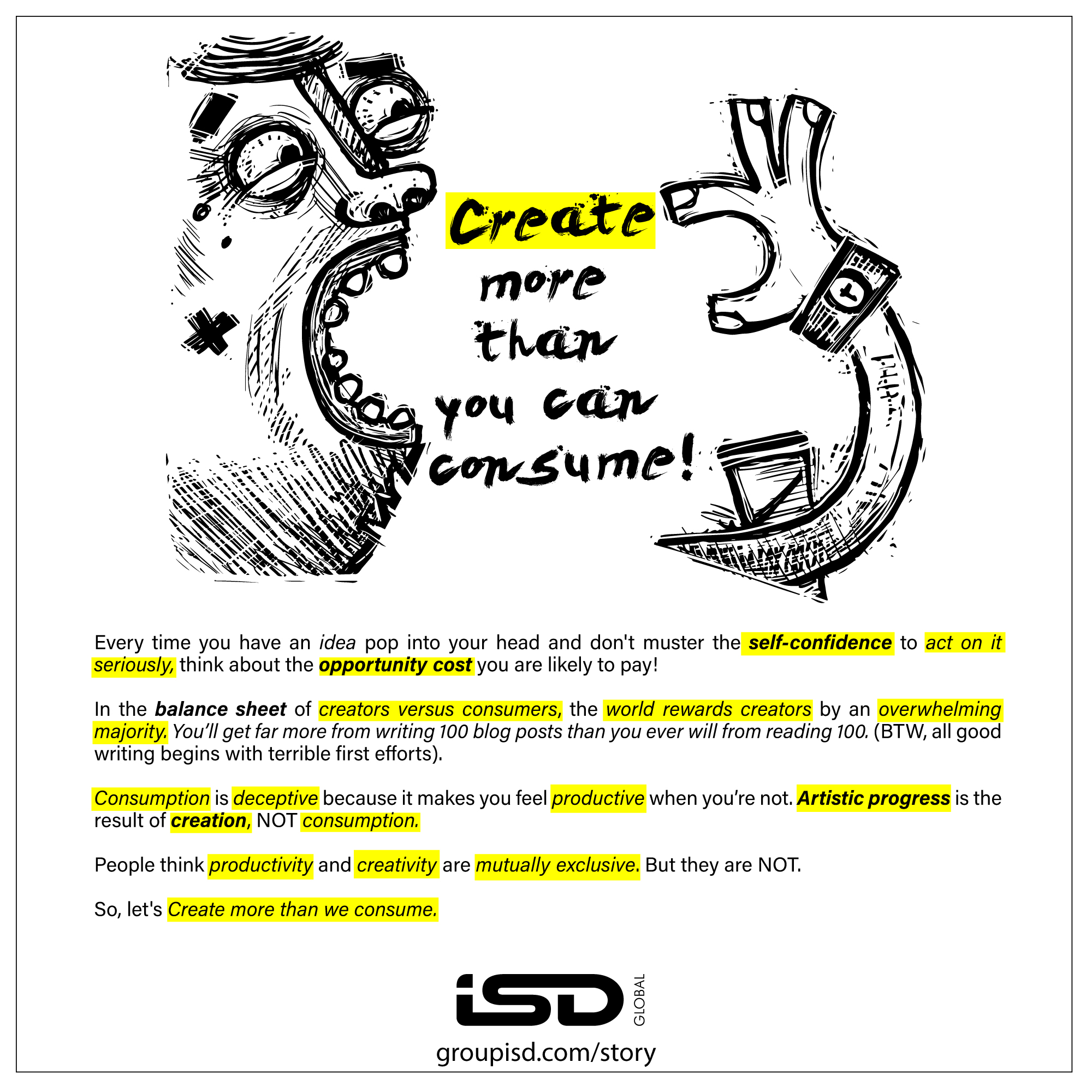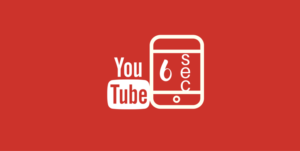
Are You Putting All Your X In One Basket? Y?

Distilled, actionable insights on branding, innovation, creativity, leadership, soul enhancement, marketing, advertising and design thinking

” Your real competition is your distraction “– Anonymous
If you are reading this, amidst your deep immersive work, you shouldn’t be. This would seem weird coming from the guy who sent you this in the first place.
The achilles heel of our times: Staying focused and distracted by a lot of ideas.
We are living through a crisis of distraction. Plans get sidetracked, friends are ignored, work never seems to get done. Why does it feel like we’re distracting our lives away?
Donuts taste great when we are eating them. But we feel like shit some time after. We get a bit of short-term pleasure and long-term pain.
The two primary motivators of changing our behavior are:
Avoiding pain &
Experiencing pleasure
All the attention management strategies in the world will not work unless we feel the pain and the opportunity cost of distractions.
If anything, the world is becoming a more distracting place. Technology is becoming more pervasive and persuasive.
We all suffer from the shiny object syndrome. The thrill of the chase. And the after glow.
Our biggest obstacle is fighting our addiction with social media and the mobile phone.
Wasting time online, ironically consuming content about how to be a more prolific, successful creator.
Digital distractions create somewhat of a paradox. We get to avoid the pain of focusing on something that matters to us. And the dopamine hits we get from checking our emails or scrolling through our Instagram | Facebook feeds. That gives us a lot of pleasure.
But that little boost of pleasure becomes painful when we realise that we’ve wasted time on something that prevents us from accomplishing our real goals.
It’s hard to change anything until our motivation is strong enough. Before we can deal with our addictions to distraction, it is important to uncover our motivations.
A donut called distraction.
ENDS
The Golden Cage? Probably yes.
Intrusion capitalism paves the way for what has been called the ‘ convenience economy ‘. And like billions around the world, we are almost comatosed into not only acceptance but to dig deep and stay there. The numbness of convenience, shall we say? And apart from the occasional murmur or a sporadic protest, life goes on.
We don’t have to go very far but look at a few examples. Let’s begin with one of the usual suspects-brands like Amazon, Amazon Prime and their accompanying eco system that touches the lives of millions of customers around the world every day. For about US$ 10 a month( if you are in the US), you get a vast pool of content, priority door step delivery at the most economical value for zillions of products. And with Alexa(another Amazon wonder) taking root as a serious tool for search and e commerce, the cesspool of dependence has only gone deeper and broader. Since there is no better reason( or a better alternative by far), we as customers are happy to be remain comfortably domiciled.
With 2.2 billion users every day around the world, Facebook is a monster drug(combining its repertoire of Whats App, Instagram users) and there is no saturation in sight as the time spent on these platforms seem to be only increasing. Data theft, brand safety, privacy intrusions etc have not stopped the eccentric growth of this juggernaut. Sometime back, the powers that be at Facebook actually mentioned that they are addressing the privacy and data theft concerns and they are prepared for a 95% success. Very recently, under pressure from several quarters, the commitment went up to 99%!!! It’s akin to an airline saying that we are 99% sure of our landings. 1% can be seriously debilitating and you don’t have to look further than the New Zealand shooting which went live to understand what I am trying to say. But, just like the case of Amazon, there is no mass exodus. On the contrary, the clamour to get in is only increasing. The absence of a viable, palatable alternative definitely helps the cause. People are staying put!
As Steven Van Belleghem espouses in his book Automation, AI and the Customer Experience , just as there is a mandatory audit of all corporations’ financial statements both internally & externally, there has to be a regulation in place calling for ‘ algorithm transparency ‘. Because, presently only the outcomes are understandable while there is no clarity on the inputs- especially the bias and the prejudice that gets fed into the codes to manipulate outcomes. I think this is a clarion call for a basic ‘ code of conduct ‘ and the earlier it gets put into place, surveillance capitalism will have some guard rails.
Till then, the (algo)rithm is going to get you! And it’s quite possible that you go blue in the Face(book).
ENDS
https://www.groupisd.com/story
https://www.brandknewmag.com
https://www.weeklileaks.com
The death of an advertising stalwart!
Well it surely appears so. And Silicon Valley is killing it.The rise of social media has made the elaborate plot lines of old-school spots seem archaic. And the Mad Men are, well, mad.Or, so was the fad!
Trapeze back to the days of the 30 second long format ads(long by today’s standards) where marketers, brand owners, agency heads, creative directors, art directors and film makers peddled a basketful of promise, creative thought and motivation to influence the seemingly reachable TG in their quest to change behaviours, cultures and consumption patterns. There was a certain trance in that romance to create.

So what is prompting the change? In an always on land of uncertainty, are we losing the plot(and losing the audience) or has the landscape itself changed?
6 is the new 30
They say 20 is the new 40 when it comes to audience maturity and demographics. Platforms like YouTube have increasingly challenged agencies to tell their stories in a 6-second slot — the average attention span of today’s mobile user. That mobile user, who again by conventional paradigm, is on a perennial instant fatigue. So 30 seconds is a long journey to risk with them! 6 has indeed become the new 30. And numbers don’t lie!
It makes sense. You might be willing to sit through a 3-minute trailer before a movie, or a 30-second “Whassup” ad before an episode of Jimmy Fallon.That may come across as non intrusive or no skin of your back. But amidst the native content of notoriously short-form channels like Instagram or Snapchat, these types of ads are disproportionately long. So much so, that they may pre qualify to be spam! Just kidding.
And for all those who are number crunchers: if we had a nickel for every 60-second YouTube video we gave up on because of an unskippable 30-second ad, we’d be at least $1.25 richer. What will you do for a few dollars more?
“Creativity is dead.” — Old School Advertisers
That almost seems like an Old Jungle saying(remember Phantom is rough with roughnecks!!!).
Ad execs counter that cutting time means sacrificing emotional stakes and story arc for the sake of speed, effectively prioritizing watchability over effectiveness.
Another, not-so-secret motive: it’s harder to get paid proportionally for the production of super-short ads, which still require actors and equipment.The CFO and CMO lines have been blurring and the motive should not surprise us.
Hey, we love Ogilvy as much as the next ad geek. But as the father of mass media, Marshall McLuhan, put it back in the ‘60s: “The medium is the message.” Yes, we now surely get the message.
And today’s medium is 6-second Snap Stories. And it has to be over in a snap. Otherwise today’s audience will snap out of it.So the mean median for a message is all coming down to 6 in the City(and beyond).
So, Lights, Camera….do we have the time to say Action?
ENDS
www.groupisd.com
www.brandknewmag.com
Image: Digitalvidya